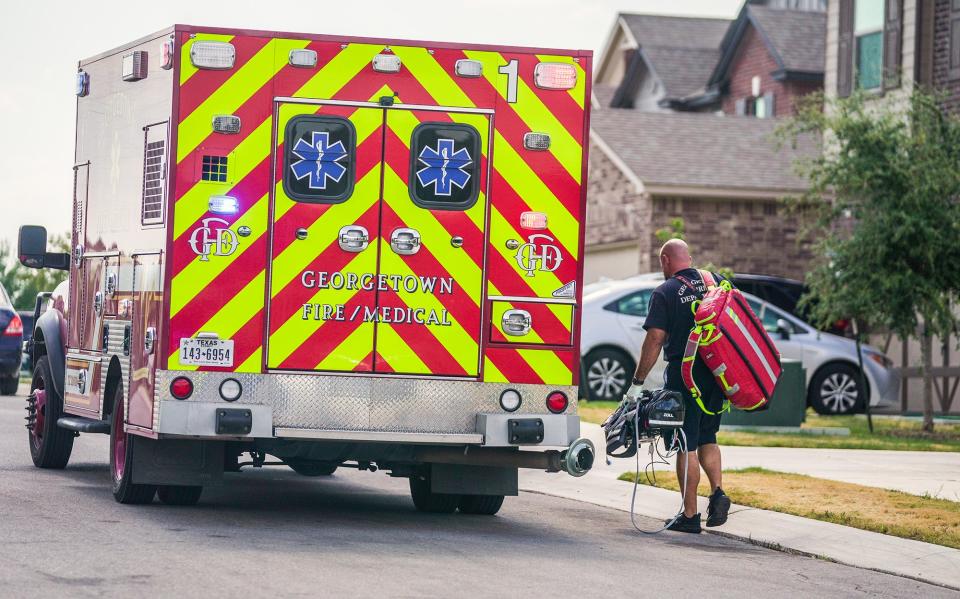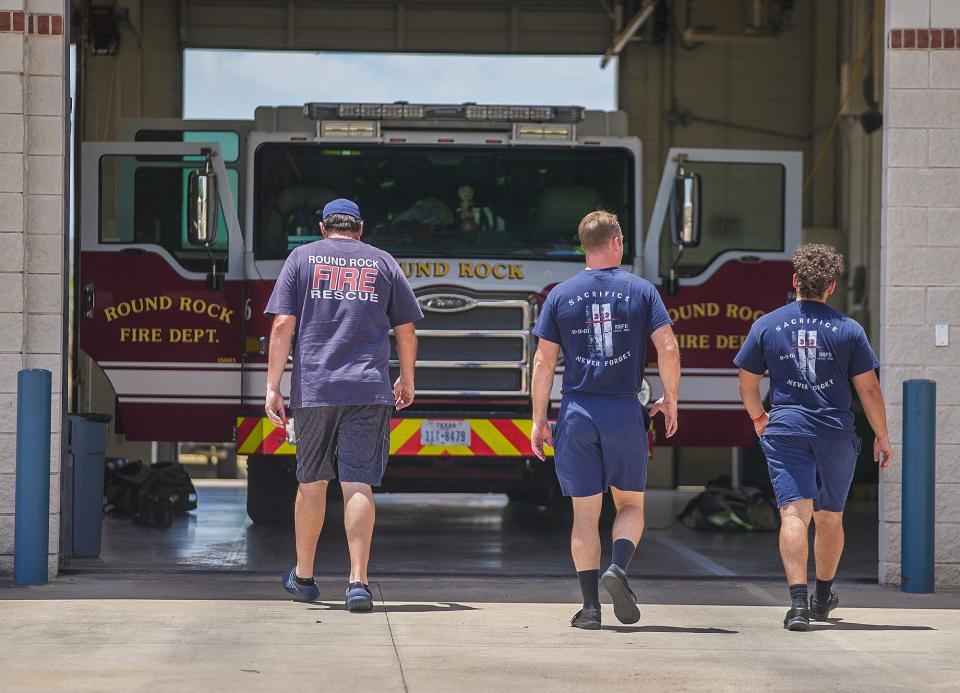Suburban Austin-area paramedics not seeing big spike in heat-related calls
Williamson County medics have already topped the number of heat-related calls during this summer of triple-digit temperatures compared with the same time last year, while Bastrop County paramedics have seen their calls decrease, officials said.
San Marcos Hays County EMS has seen about the same number of calls involving heat-related conditions during June and July as it did during the same period last year.
None of the emergency services in the three Central Texas counties have seen record-breaking numbers of heat-related calls like those recorded in Travis County, but officials are warning people to limit their time outdoors, drink plenty of water and take frequent breaks.
The main misconception people seem to have about the record-setting heat is that since they grew up in Texas, they can handle it, said Williamson County EMS Director Mike Knipstein. "It can sneak up on you," he warned.
"It doesn't matter how in shape you think you are, or how well hydrated you are, you need to take frequent breaks and take longer breaks than you usually take," he said. If you normally do 20 minutes of mowing, you need to cut that down to 10 or 15 minutes before taking a break, Knipstein said.
Williamson County EMS has seen its heat-related calls increase to 99 from June 1 to July 31 this year compared with 88 calls during the same period last year, according to its records. In addition to other heat-related calls, Williamson County EMS also handled seven people with heatstroke during June and July, the same number it handled during the same time last year.
Heatstrokes are counted separately from heat-related calls because they involve a different diagnosis and a different treatment, Knipstein said.
Williamson County EMS provides service to the rural areas of the county, as well as all of its cities except Georgetown.

More: July breaks records for average temperature, heat-related calls to Austin EMS
Medics in Bastrop County experienced a 36% decrease in their heat-related calls during June and July compared with last year. Medics there had 27 heat-related calls from June 1 to July 25, compared with 42 calls last summer during the same months, according to information provided by Acadian Ambulance Service of Texas, which serves all of the county.
"As far as the decrease, we don't know for certain what the reason may be," company officials said in a statement. "It could be due to hearing about it frequently in the news, radio and other media outlets to raise awareness. People are taking shelter and staying out of the heat."
More: Hot days mean Austin emergency rooms racing to cool people quickly
Information about the number of heatstrokes Acadian handled was not available.
San Marcos Hays County EMS has seen its calls for heat-related conditions decrease slightly to 13 calls from June through July 25 after 14 such calls during the same period last summer. It serves the rural areas of Hays County as well as the cities of San Marcos, Kyle, Mountain City, Niederwald and Uhland. It also serves the rural areas of Guadalupe County and the city of Staples.
The number of heat-related calls is small because they usually just include people with nausea or cramping or minor symptoms, Battalion Chief Maxwell Wible said. They don't include more serious situations involving heat such as people found unconscious or having a heart attack, he said, because those are documented differently.
One of the heat-related incidents this year involved a vehicle without air-conditioning, while the others all occurred outside, said Wible.

The city of Georgetown, which operates its own ambulance service, has seen a slight increase in calls this summer, according to its records. Georgetown EMS handled 33 heat-related calls June 1-July 25, compared with 28 calls during the same period last year, the records showed.
It also handled one heatstroke from June 1-July 25 compared with three heatstrokes during the same period last year.
The people who have been the subject of heat-related calls for Williamson County EMS range from young adults to people in their 80s. None of the calls have been for children, Knipstein said.
"What we tend to see in younger (adults) is they are outside doing activities and just not taking frequent enough breaks," he said. "In the older population, some of them are going outside to get some fresh air and end up falling and not being able to get up and suffering a heat-related illness."
Older people need to tell someone they are going outside so that person can check on them, Knipstein said.
None of the heat-related calls have been connected to people exercising outdoors, he said.
"It's folks going outside to do normal yard work," he said.
Problems start when people start getting overheated and have nowhere to go to cool off, Knipstein said. Symptoms of heat exhaustion include heavy sweating, nausea and dizziness.
If untreated, heat exhaustion can turn into a heatstroke. During a heatstroke, a person stops sweating, can become confused and their temperature starts to rise, Knipstein said.
"They are not sure where they are and tend to sit out in the heat," he said.
Williamson County EMS has used a new way to treat seven people this summer suffering from a temperature of 105 degrees or higher due to a heat-related illness, Knipstein said. Medics put them in a body bag and pack ice around them for a maximum of 10 minutes to quickly lower their body temperatures, he said.
"We've had great success," he said. "People that were either completely unconscious or in an altered state and not making any sense are talking and fine by the time we get them to the hospital."
This article originally appeared on Austin American-Statesman: Suburban Austin paramedics not seeing big spike in heat-related calls
